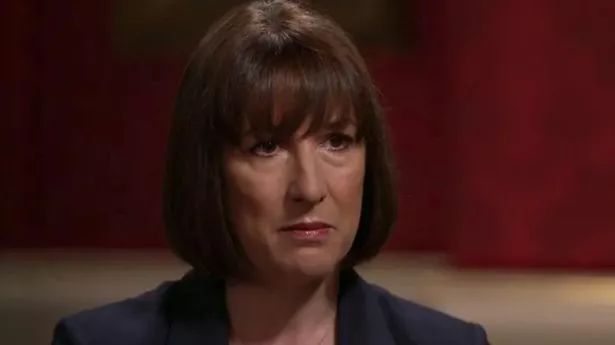NHS Crisis – Waiting Lists Have Reached Record High Under Tory Government
Lives are being put at risk with the increased waiting times for operations as well as people waiting to be seen in A&E
The NHS is in serious trouble under Rishi Sunak watch. No matter how the Government try and spin things, waiting times for operations has reached a record high.
In Lincolnshire, patients have been left to suffer due to the increased waiting lists. Some patients in Grimsby, Skegness, Boston, Scunthorpe, and Lincoln are having to wait for more than a year to receive the treatment they need.
At the end of September, the waiting list in England reached a staggering 7.77 million, surpassing the previous record of 7.75 million at the end of August.
These figures, as reported by NHS England, reveal a concerning trend of increasing waiting times. It is important to note that this number represents individual patients, meaning that more than a million individuals are waiting for multiple treatments.
This overall waiting list figure is the highest recorded since August 2007, highlighting the severity of the situation. Despite Prime Minister Rishi Sunak’s emphasis on reducing waiting lists, the numbers continue to rise while lives are put at risk.
The crisis in England’s hospitals is not limited to the waiting list alone. A&E departments are also facing significant challenges. In October, only 55.9% of patients attending major ‘type 1’ A&Es were seen within four hours of arrival, a decrease from 57.6% in September. This is the lowest percentage since December 2022 when only 49.6% of arrivals were seen within the target time.
However, it is important to acknowledge that the figures improve when considering other types of A&E, such as walk-in centres, where 70.2% of arrivals were seen within four hours.
The financial burden caused by strikes in the NHS has led hospitals in England to consider cutting back on some pre-planned care.
The total cost of strikes since December last year has exceeded £1 billion. To offset this cost, measures such as reducing pre-planned care have been proposed, further exacerbating the strain on the system.
The latest NHS performance figures reveal that a substantial number of patients in England are waiting longer than expected for routine hospital treatment.
At the end of September, an estimated 10,201 people had been waiting for more than 18 months, a significant increase from the 8,998 individuals at the end of August.
Despite this concerning trend, there has been a reduction in the number of people waiting for over a year, from 396,643 in August to 391,122 in September. The government and NHS England have set a target of eliminating all waits of over a year by March 2025.
Key cancer targets have also not been met in September. Only 74% of suspected cancer patients saw a specialist within two weeks of urgent referral by their GP, falling below the target of 93%.
Additionally, the percentage of cancer patients receiving their first treatment within two months of referral decreased from 62.8% in August to 59.3% in September, below the target of 85%.
Increased Waiting Times in A&E Departments
The number of people waiting in A&E departments in England has significantly increased. In October, 44,655 individuals waited over 12 hours from the decision to admit to actual admission, a 35% increase from September.
The number of patients waiting at least four hours for admission rose from 125,787 in September to 144,926 in October. This has led to a decline in the percentage of patients seen within four hours, which dropped from 71.6% in September to 70.2% in October.
NHS England reported that major A&E services experienced the busiest October on record, with 2.2 million people attending accident and emergency departments. Concurrently, ambulance services also faced their busiest month of the year.
The response times of ambulances dealing with the most urgent incidents have increased. In October, the average response time for these incidents was eight minutes and 40 seconds, surpassing the target standard response time of seven minutes.
Furthermore, ambulances took an average of 41 minutes and 40 seconds to respond to emergency calls such as heart attacks, strokes, and sepsis, surpassing the target time of 18 minutes.
Professor Sir Stephen Powis, NHS England’s national medical director, said: “The figures are a stark reminder of the ongoing pressures the NHS is facing, particularly in emergency care with significant demand for ambulances and A&E, as we head into what we are expecting to be another challenging winter in the health service.
“Despite these ongoing pressures, including 10 months of strikes, the NHS has made progress on its three recovery plans, and it is important to recognise the incredible efforts of staff who are seeing and treating many more people than pre-pandemic.
“But these strikes have had a significant impact on patients and staff and created unavoidable financial costs – this is why we have set out actions for local areas to take to protect patient safety and prioritise urgent and emergency services so that patients receive the best possible care this winter, while the primary focus for elective activity should be on long waits and patients with urgent care and cancer needs.”
Health commentators have expressed concerns that the performance figures indicate a potentially bleak winter for the NHS.
Dr Tim Cooksley, immediate past president of the Society for Acute Medicine, said: “With a sense of tragic inevitability, the data shows a spiral of decline that will mean patients will endure long waits, degrading corridor care and inevitable harm over the upcoming winter months.”
A Department of Health and Social Care spokesperson said: “Cutting waiting lists is one of the government’s top five priorities and, despite disruption from strikes, 18-month waits are down more than 90% from their peak in September 2021.
“The NHS is seeing high demand for urgent and emergency care, including record A&E attendances for October, and we are backing it with billions of investments to improve performance. We are now also providing an additional £800 million for this winter – a combination of reprioritised and new funding – to support urgent and emergency and maternity and neonatal care, tackle the longest waits and cancer backlogs, and boost discharge rates.”
The failure of the Government to deal with the crisis in the NHS has had a serious impact on Doctors and nurses. Due to not feeling valued, record numbers of Doctors and nurses are leaving the NHS which will have a negative impact on patient care.
Nurses, Doctors, and patients have become fed up with all the promises by Rishi Sunak and are leaving the NHS in droves. This will only further result in longer waiting lists.


